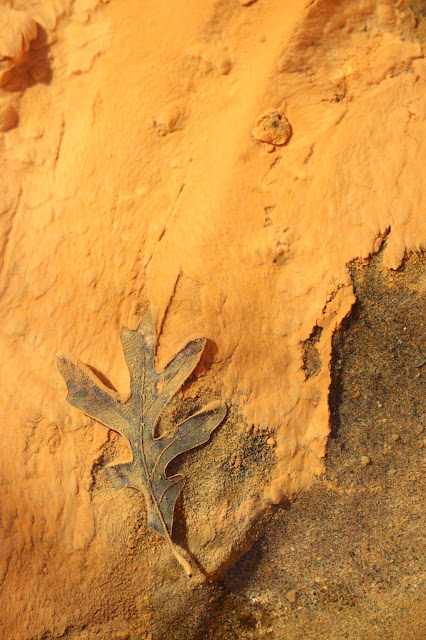What's the Difference Between Rocks and Minerals?
A mineral is solid compound with a crystalline structure. It is the same color, hardness, luster, and density all the way through. It could be soft, dull, light and powdery, like talc. It could be hard and dense, like iron ore. It could be bright and glassy like a gemstone. It could be any color you can imagine. There are a few special cases, like tourmaline in some localities, that have multiple colors in the same crystal, but these are rare and all the other properties remain the same throughout.
Minerals are the ingredients in Mother Nature's kitchen for cooking rocks. Sometimes the rocks, like our food, are made up of a single ingredient - like a banana or an egg. Other times, they are made of several minerals. However, the ingredients remain distinct, individual components. Think of a granola bar or rocky road ice cream.
Some rocks are made of crumbs of other rocks that are deposited in one spot over time and pressed together, like a graham cracker pie crust. This is called sedimentary rock. Most fossils are found in sedimentary rock because the biomatter gets buried in the crumbs and preserved in one way or another.
Some rocks are made up of minerals that poured into an underground fissure or out of a volcano, then cooled, like chocolate poured into a mold. This is igneous rock. Both pumice and granite and are igneous rocks.
Still others are cooked underground by heat and pressure, changing the density of the whole and also altering the nature of some of the ingredients, like baking a cake. This is metamorphic rock. Granite is transformed into schist and gneiss (pronounced "nice") this way. Some minerals only exist in metamorphic rock because of the heat and pressure required to transform them from one mineral into another. Tourmaline and sillimanite are two such minerals that occur in gneiss deposits.
Hmmm. All this talk of cooking rocks is making me hungry. Time for a nice, gneiss sandwich?
Minerals are the ingredients in Mother Nature's kitchen for cooking rocks. Sometimes the rocks, like our food, are made up of a single ingredient - like a banana or an egg. Other times, they are made of several minerals. However, the ingredients remain distinct, individual components. Think of a granola bar or rocky road ice cream.
Some rocks are made of crumbs of other rocks that are deposited in one spot over time and pressed together, like a graham cracker pie crust. This is called sedimentary rock. Most fossils are found in sedimentary rock because the biomatter gets buried in the crumbs and preserved in one way or another.
Some rocks are made up of minerals that poured into an underground fissure or out of a volcano, then cooled, like chocolate poured into a mold. This is igneous rock. Both pumice and granite and are igneous rocks.
Still others are cooked underground by heat and pressure, changing the density of the whole and also altering the nature of some of the ingredients, like baking a cake. This is metamorphic rock. Granite is transformed into schist and gneiss (pronounced "nice") this way. Some minerals only exist in metamorphic rock because of the heat and pressure required to transform them from one mineral into another. Tourmaline and sillimanite are two such minerals that occur in gneiss deposits.
Hmmm. All this talk of cooking rocks is making me hungry. Time for a nice, gneiss sandwich?




Comments
Post a Comment